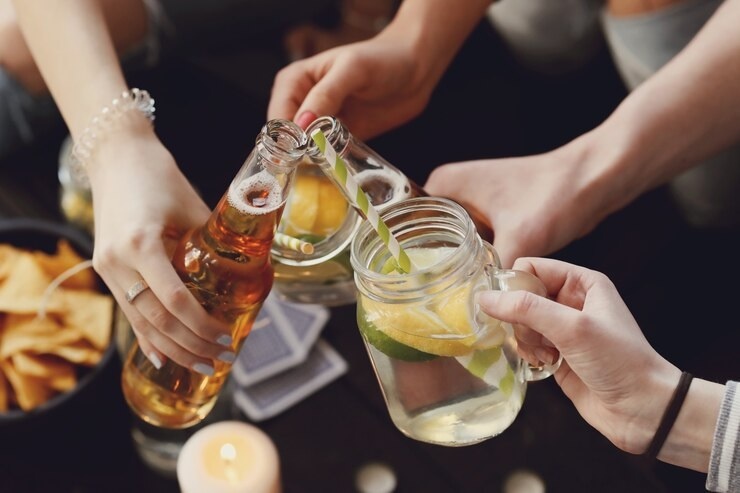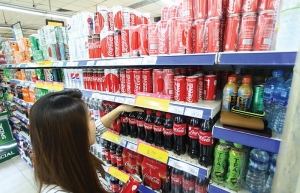Alcoholic beverage groups urged to track trends
 |
| Alcoholic beverage groups urged to track trends, illustration photo/ Source: freepik.com |
Alcoholic beverage businesses are placing high expectations on an increase in purchasing power during the 2024 Lunar New Year, but many experts assess that the difficult situation cannot yet improve.
According to Nguyen Phuong Nga, senior business development director of market data company Kantar Vietnam, consumers will still tighten their spending and not give much priorities for beer and wine products. “Some customers are limiting their choices of some products such as wine and beer, and sharply increasing spending on healthy beverage products,” said Nga.
Although there are no official statistics for the entire year, according to the latest third quarter report, most alcoholic beverage businesses have experienced an unfavourable business year.
According to the financial report for the 2022-2023 period, revenues of ThaiBev, the managing unit of Saigon Beer-Alcohol-Beverage Corporation (SABECO) in the Vietnamese market, reached about $1.77 billion, down 5.7 per cent compared to the same period last year.
In the first three quarters of 2023 alone, SABECO recorded an on-year decrease in both revenue and profit after tax of 12 and 26 per cent, respectively.
Vietnam accounts for nearly 21.5 per cent of ThaiBev’s total consolidated revenue. Although revenue in the Vietnamese market decreased slightly, the group’s total revenue still increased by about 2 per cent over the same period.
Meanwhile, Hanoi Beer Alcohol and Beverage JSC (Habeco) also recorded a reduction in revenue of nearly 6.3 per cent in the first nine months of 2023 and a drop in profit of about 39 per cent, reaching $237.6 million and $12.3 million.
Consumption of Vietnam Brewery, a Vietnamese brewery joint venture which distributes Heineken and Tiger, also went down by 16.5 per cent.
Nguyen Van Viet, chairman of the Vietnam Beer Alcohol Beverage Association, said that the alcoholic beverage consumption market decreased by 20-30 per cent last year due to disruption of the global supply chain, which has caused the price of raw materials in the beer industry to increase by about half.
“In addition, the explosion of imported beer brands in the high-end segment also affects the market share of domestic beer businesses, which are strong in the mid-range segment,” Viet said.
According to data from the General Statistics Office, in the first nine months of 2023, beer production in Vietnam reached 3.41 million litres, an increase of only 0.02 per cent over the same period.
While big brands are struggling to do business amid a gloomy market, small-scale domestic craft beer brands are easily going upstream thanks to flexible business strategies and cost reduction from lean machinery.
Cuong Nguyen, founder and CEO of C-Brewmaster Craft Beer, said that although still suffering from general negative impacts from the market, its sales volume will still increase by about 7-8 per cent in 2023.
“In addition to quality and brand, consumers are increasingly interested in experiential culture,” Cuong said. “Craft beer products are made from local ingredients with rich flavours and colours, and have their own stories, so they easily bring emotions to customers than industrial beer products,” he said.
The products of this brand are currently distributed mainly in 4-5 star hotels, resorts, restaurants, and golf courses in the biggest markets in the country.
In addition to efforts to diversify new products and flavours, Nguyen confirmed that the business will build a third factory in the south-central province of Phu Yen, coordinating with two factories in Hanoi and the Mekong Delta province of Tien Giang to ensure the best customer service.
According to Vietdata, Vietnam’s beer consumption is 3.8 million litres per year, accounting for 2.2 per cent of the global market. Vietnam is the top country in the entire ASEAN region, and third in Asia, in beer consumption.
However, Dr. Vo Van Quang, a strategic marketing expert, said that the alcoholic beverage industry will grow at a low, stable rate over the next 3-5 years. “Beer businesses are forced to invest more in advertising, promotions, and retail systems to protect points of sale and maintain market share. The profit rate is no longer as high as in previous years, but it is still a playground where investors can earn profits,” he said.
 | Beverage battle fizzes up for domestic and foreign players Non-alcoholic beverage producers in Vietnam have reported impressive growth thanks to the large space for development, which is the basis for both foreign and domestic players’ long-term investment commitment. |
What the stars mean:
★ Poor ★ ★ Promising ★★★ Good ★★★★ Very good ★★★★★ Exceptional
Related Contents
Latest News
More News
- Businesses ramp up production as year-end orders surge (December 30, 2025 | 10:05)
- Vietjet chairwoman awarded Labour Hero title (December 29, 2025 | 13:06)
- How to unlock ESG value through green innovation (December 29, 2025 | 10:03)
- AI reshapes media and advertising industry (December 29, 2025 | 08:33)
- FPT and GELEX sign deal to develop blockchain tech for global markets (December 29, 2025 | 08:29)
- Vietnam’s GDP forecast to grow by 9 per cent in 2026 (December 29, 2025 | 08:29)
- Women entrepreneurs are key to Vietnam’s economic growth (December 29, 2025 | 08:00)
- Vietnam's top 500 value-creating enterprises announced (December 27, 2025 | 08:00)
- The PAN Group shaping a better future with ESG strategy (December 26, 2025 | 09:00)
- Masan Consumer officially lists on HSX, marking the next phase of value creation (December 25, 2025 | 13:20)

 Tag:
Tag:




















 Mobile Version
Mobile Version